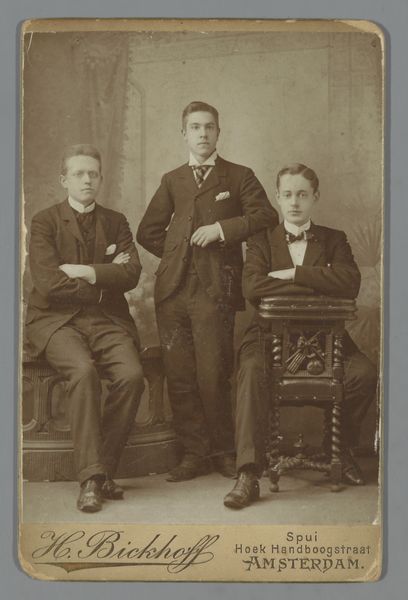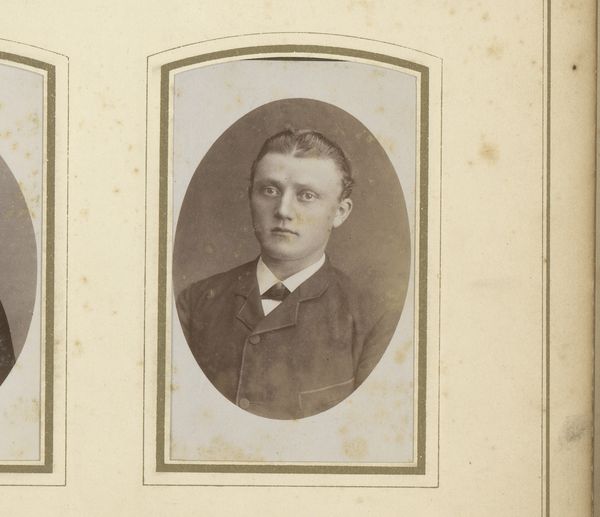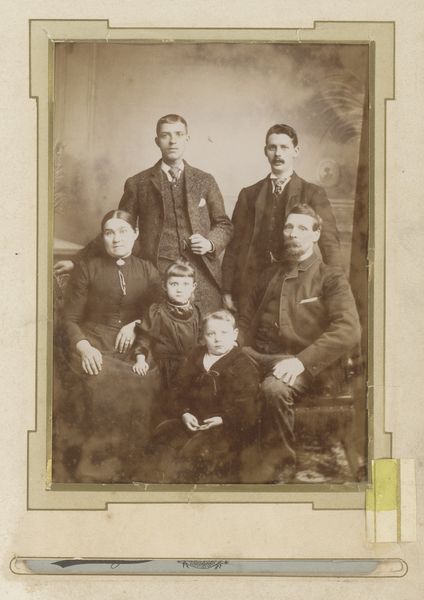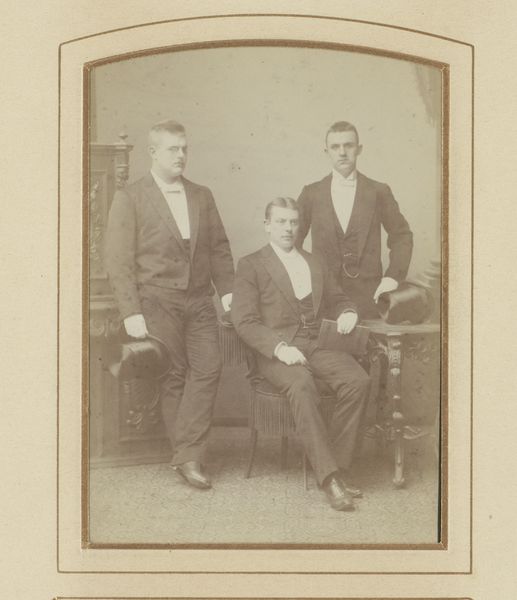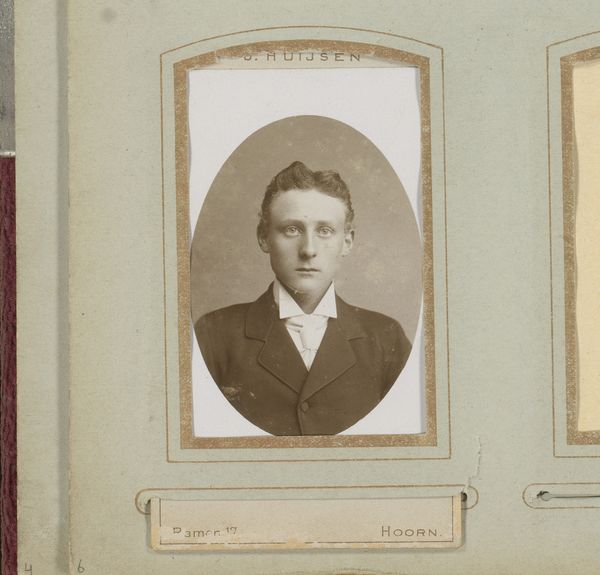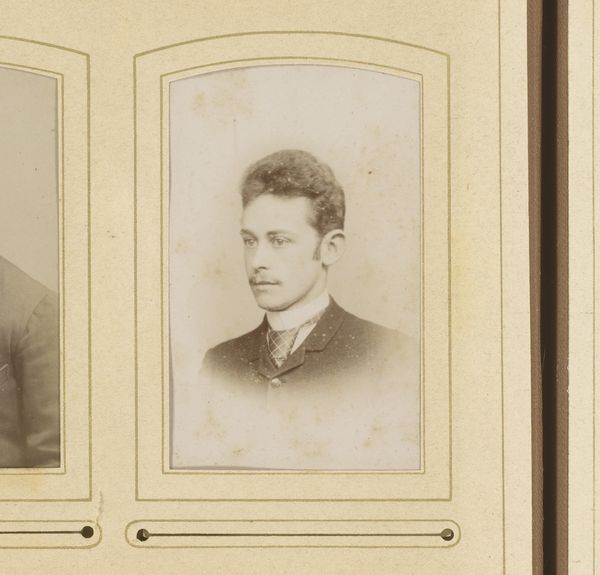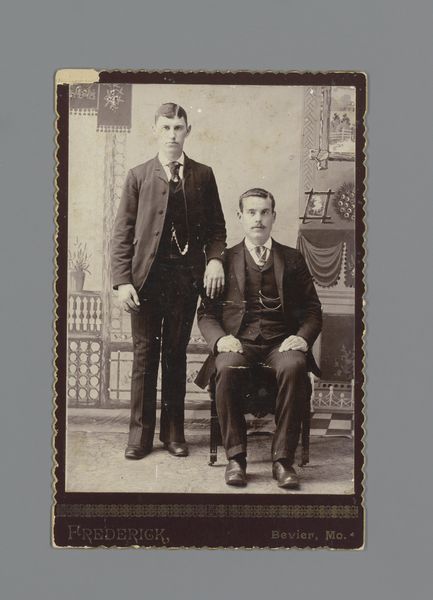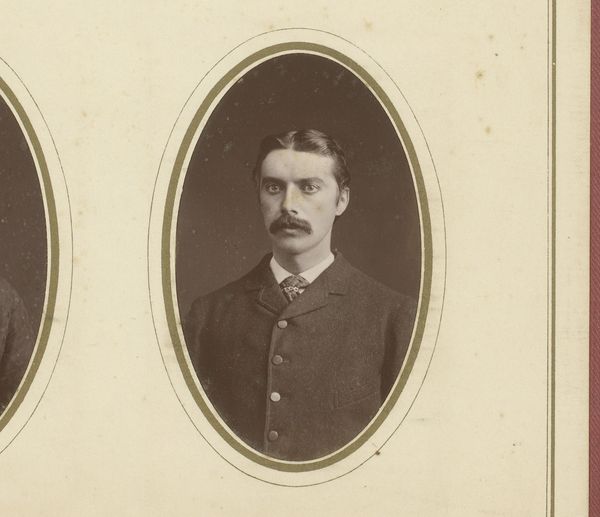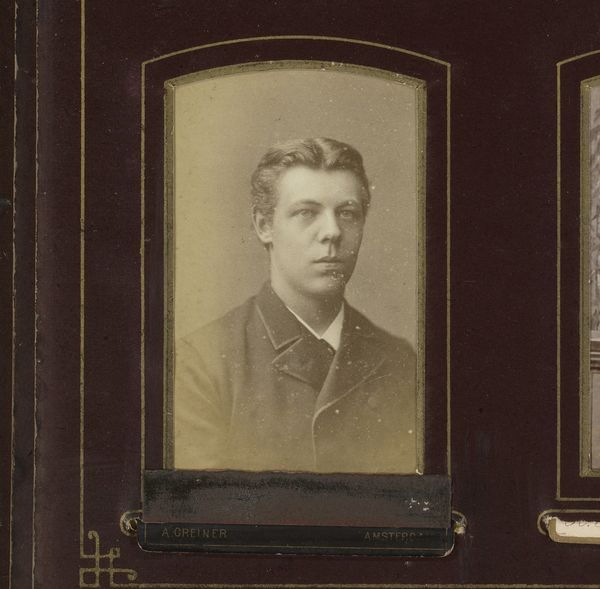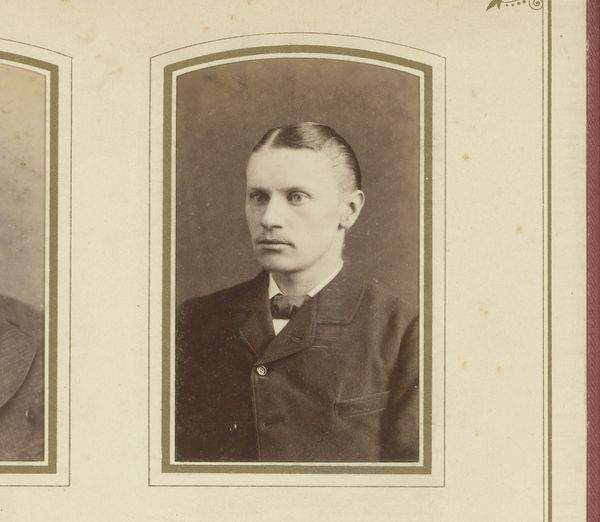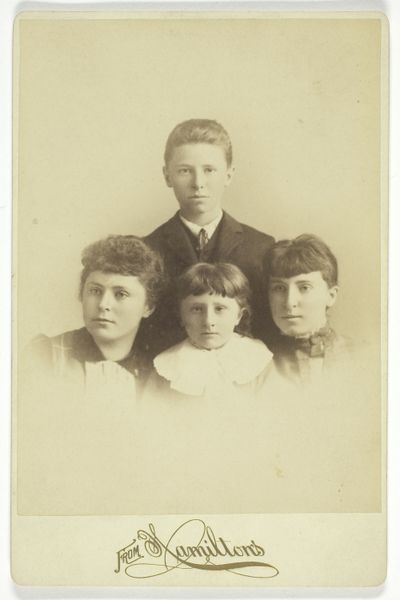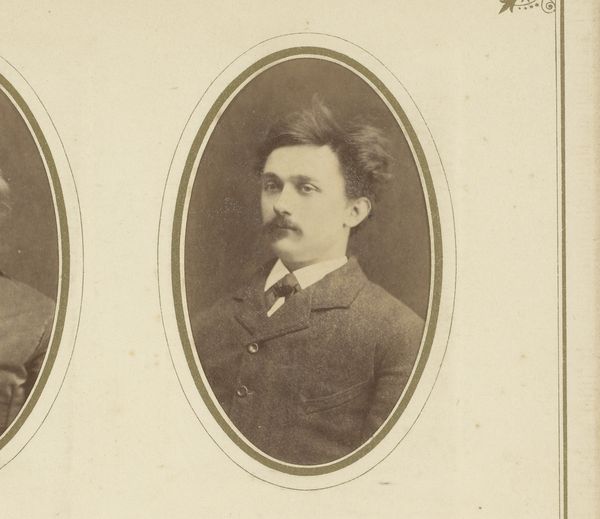
photography, gelatin-silver-print
#
photography
#
historical photography
#
group-portraits
#
gelatin-silver-print
#
19th century
#
academic-art
#
realism
Dimensions: height 57 mm, width 93 mm, height 62 mm, width 105 mm
Copyright: Rijks Museum: Open Domain
Editor: This gelatin silver print, “Drie Mannen,” or “Three Men,” dating from around 1870, presents a really interesting study of portraiture from that time. The three men are positioned very deliberately. I wonder what a deeper look might reveal? What's your interpretation of this photograph? Curator: What immediately strikes me is the context of photographic production in the 1870s. Gelatin silver prints offered greater sharpness and reproducibility compared to earlier processes. This allowed for a burgeoning market of affordable portraits, impacting social mobility and representation. Think about the labor involved, the silver mining, the factory production of photographic paper – all of this contributed to its accessibility. Editor: That's a good point. So you are saying this reflects on mass production rather than art. It seems a mundane photo; not much "art" there. Curator: Exactly! Challenging the traditional hierarchy. Where do we draw the line between commercial photography and art photography, especially when the same materials and processes are involved? Were the clothes tailor-made? Are the differences in jackets suggestive of status and wealth of some kind? How might it play into identity creation and social signaling in a rapidly industrializing society? Editor: I see your point. The widespread availability of photography created a whole new visual language that both reflected and shaped society. Curator: Indeed. Analyzing the materials, the labor, and the consumption surrounding this seemingly simple photograph gives us insights into the complex social fabric of the 19th century. Editor: Thanks, that really gave me a new way to appreciate what would appear to be a commonplace image. Curator: It's precisely in these everyday objects that we often find the most revealing narratives about our shared past.
Comments
No comments
Be the first to comment and join the conversation on the ultimate creative platform.
